SPECIAL REPORT: Motorsports Streaming Services
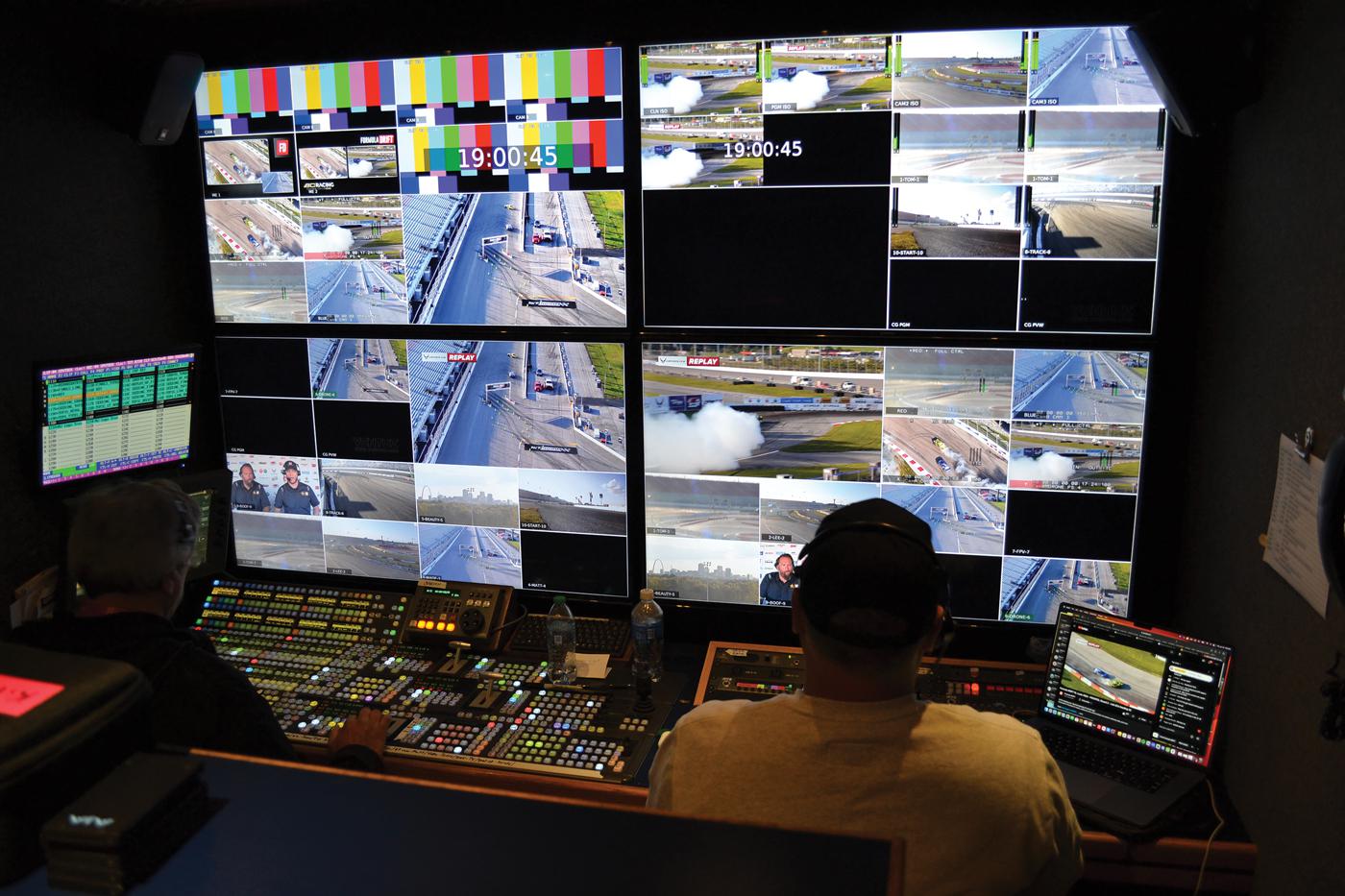
The background story behind live streaming and what it takes to produce successful digital motorsports events.
Never have racing fans had more ways to watch motorsports. From the earliest days of motorized competition, when the only way to see a race was to be planted in the grandstands, the mass communication evolution of the 20th century saw racing coverage expand from printed publications to radio to television network broadcasts to cable sports channels.
Now, in the 21st century, online streaming is bringing racing—from the grassiest of grassroots to the top echelons—to a wider audience. As is suitable for a sport built on speed, streaming has come a long way in a short time.
One streaming operation that illustrates that historical span falls under the Speed Sport banner. Its streaming properties are speedsport.tv and Speed Sport 1, based in Mooresville, North Carolina. The Speed Sport media company has racing roots that go back to 1934, when the Bergen Herald newspaper in New Jersey produced the first issue of National Auto Racing News, which later became National Speed Sport News. Speed Sport became a staple of the racing industry under the ownership of the late Chris Economaki.
Following Economaki’s death in 2012, Ralph Sheheen, Joe Tripp, and another business partner purchased the brand and relaunched it with the full-color Speed Sport magazine and the speedsport.com website. Sheheen and Tripp were both SPEED Channel veterans who knew they wanted to be in the TV side of the business and assembled a team of industry heavyweights to get there. Speed Sport first added streaming services with speedsport.tv, which offers subscriptions and pay-per-view events, and Speed Sport 1, a Free Ad-Supported Streaming Television destination (known as FAST in the industry). “The way that works is very similar to what you grew up with as a kid. You turn it on, there it is, you don’t subscribe to anything, you don’t pay for anything, it’s not cable, it’s not satellite, it’s just there,” Sheheen said.
Certainly, the technological advances of the last few years have made streaming races a viable option, but the pandemic shutdowns of 2020 definitely gave motorsports streaming a leg up.
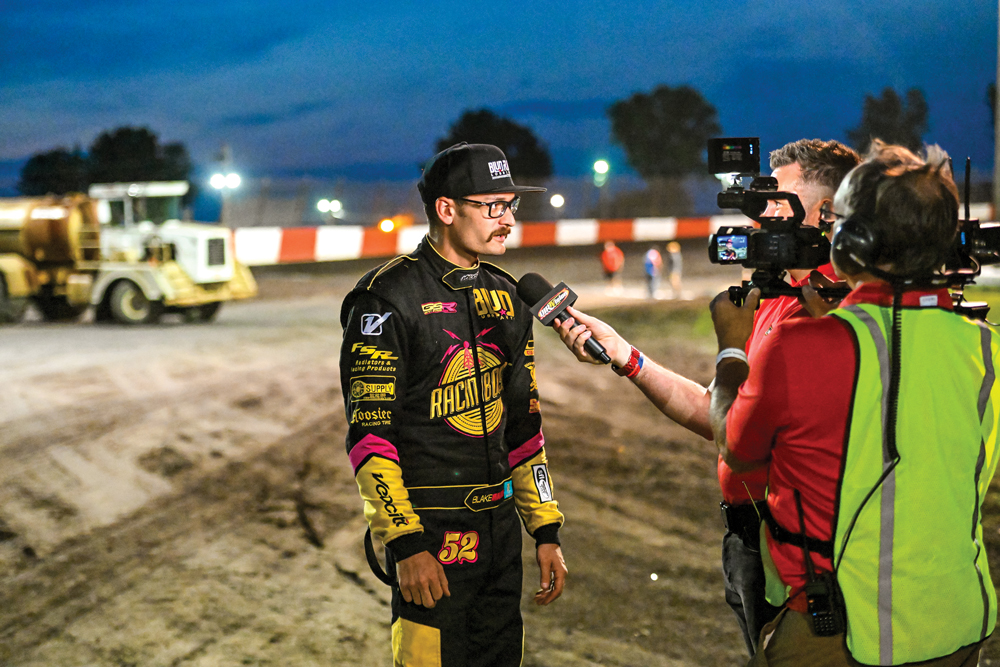
“With speedsport.tv, the pay-per-view version, what the promoters, track owners, sanctioning bodies, are looking for there is an added revenue stream. It all really became a big deal during COVID-19, because all of a sudden, nobody could go to the races,” Sheheen said. “Yet racing was able to find a way to hold events before the rest of the sports world was able to go inside of a bubble. We could go racing, but we couldn’t get anybody in the grandstands. So the promoters obviously wanted to open up their tracks, get the racing going, but how could we get them the revenue from fans not being in the grandstands? The answer was streaming. We could send a small crew to the track, keep them distanced, and allow them to broadcast the race. And then the fan, who unfortunately couldn’t go to the track yet, could sit at home, pay a nominal fee, and watch races again. They had live sports. So that’s what really took streaming in general to the next level.”
In the 10 years prior to the pandemic shutdowns, streaming races was often a seat-of-the-pants affair, with plenty of opportunities for DIY ingenuity. Michael Rigsby and his wife Amber started the DirtOnDirt website in 2007 and turned it into one of the pioneering motorsports streaming platforms. In 2019 they sold the business to FloSports, and Michael assumed the role of general manager at FloRacing in Austin, Texas. Some of FloRacing’s major streaming highlights include the Chili Bowl, races at Eldora Speedway, the Lucas Oil Late Model Dirt Series, and USAC events.
“People forget, in 2008, ’09, ’10, the internet was not what it is now, from an infrastructure standpoint,” he recalled. “I think back to 2009 when we streamed our first race at DirtOnDirt, bonding cell phone cards together and praying and hoping and all holding hands that that cell phone data, along with the T1 1.5-meg up connection, would hold up during the event—that somehow, we could make our way through the night on the unbelievably limited internet that not only the facilities had, but bonding cell phone technology. Keep in mind, cell phone technology at the time, also not good.”
Clark Cambern of Apex Broadcast in Lansing, Michigan, is another streaming veteran. Cambern was a racer himself who followed the path from karting to Formula Ford and Formula 2000 along with contemporaries such as Danica Patrick and Sam Hornish Jr. “Coming into video production as a motorsports competitor, I think I of course had a passion for and a knowledge of the sport,” Cambern said.
In the early 2000s he was attempting to put together a sponsorship deal for a Pro F2000 effort. Up until that time, a supporting junior pro series would typically receive a free “line cut” as a courtesy from the networks that were already on hand to cover a major race. The line cut had no graphics or announcements, just video of cars on track, but could be enhanced with editing and voice-over in post-production and offered to networks as free content to fit into scheduling gaps.
“Then right around that time the market shifted to where everybody started charging for line cuts, and everybody started charging for airtime. So all the little guys lost their TV packages,” Cambern said. “At that time, YouTube was starting to become more well-known. I didn’t know anything about TV production, but I thought, ‘Hey, somebody could put this on the internet.’ So I just figured it out.
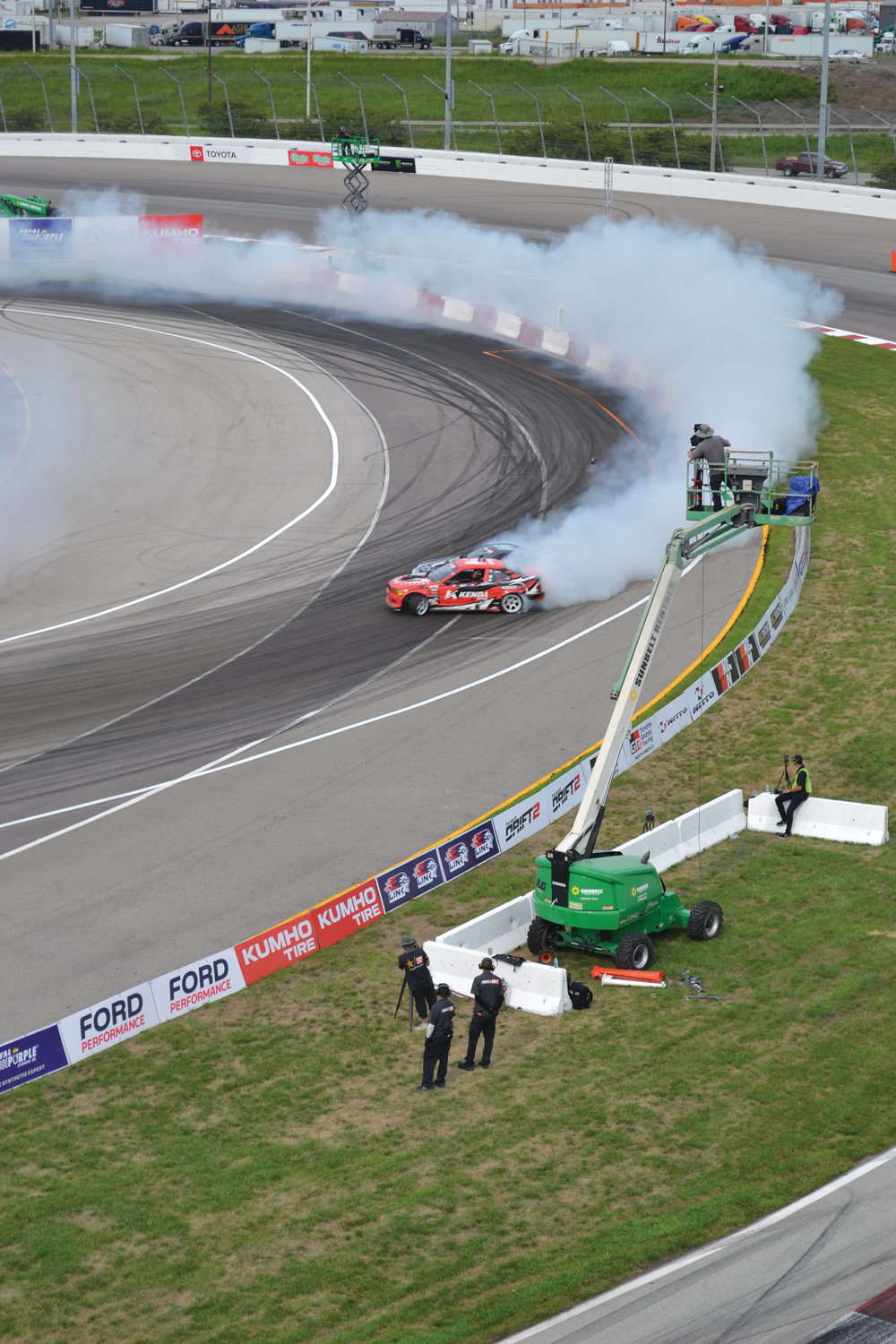
“I bought a bunch of cameras on eBay, and very early on we were using mini DVDs, like Sony Handycams. Those cameras could act as a VCR, so you’d plug in a lipstick camera that we’d mount to the roll hoop of F2000 cars. If you had battery packs, you could mount the recording unit somewhere up inside the car and reach in and kick it on right before the race. We put onboards in three or four cars and we’d do some lock-off cameras around the race track. I had one guy that would run around and turn them all on.
“We’d roll on all those cameras individually, and then I would take them back and capture all the footage, which was an awful real-time process where you play out the tape and capture it digitally. Then I would edit that into a race and have some announcers who would call the race in post, and we’d post it like a week later. We started doing that in 2007. I did that for the Pro F2000 championship, and then the National Auto Sport Association [NASA] contacted me and had us do the NASA championship the same way. It wasn’t live, it was all post-produced. We did that for a couple of years, and then in 2009 the SCCA Runoffs called us and wanted to do a live stream of the event.”
Cambern saw rapid technological change where equipment that was briefly leading edge became quickly obsolete. “At the time we were standard definition, and I had a little tiny trailer and a piece of equipment called a NewTek Video Toaster, which broke a lot. We had a lot of used equipment, and we just figured it out.”
Track Talk
If streaming races is ubiquitous now, for many years it was a tough sell to promoters and track operators. Questions about the economics of encouraging fans to watch from their couches and not from the grandstands dominated the conversation. The post-pandemic environment stilled some of those concerns, and the importance of attracting eyeballs to racing has never been more apparent.
Rigsby, in addition to being general manager of FloRacing, is part owner of a race track as well. His ownership group owns Fairbury Speedway in Fairbury, Illinois.
“I feel like I’m uniquely qualified to speak on this because I am a promoter, and we promote races every Saturday night from Memorial Day to Labor Day, and I am general manager of a streaming company, FloRacing. My take is always this: When you can show people how good your product is at your facility, it’s only going to make more people want to come to your facility.
“The amount of time, effort, and energy we spend thinking about our product at our race track—the racing itself, the experience for the fan, the experience for the mother, the father, the daughter, the son, the family, and everything that goes into that—we want to show the world that. We want to show them how cool of an experience Fairbury Speedway is, and I think we do a good job of that. I urge other promoters to do the same thing.”
One of the newest motorsports streaming services is Full Pull Live, which started streaming NTPA and Outlaw truck and tractor pulling events in 2024, along with incorporating a gaming element into their program. “For tractor pulling, the technology and innovation in the sport is elite. You look at it in a framework of 1990 to now, it’s truly incredible stuff. Once you get in the door and see it, it kind of sells itself,” said Chase Richardson, co-founder of Full Pull Entertainment, Louisville, Kentucky. “But you’re not going to grow a sport by telling people to drive across the country and buy a ticket to a place they’ve never heard of. You’re going to grow a sport by digital presence and providing a stream that is high quality, entertaining, that people want to watch, and also through social media and social channels, promoting it in that regard.”
Speed Sport 1 delivers free racing streams, the majority of which are live, of series and events such as the Nürburgring 24 Hour, 24 Hours of Spa, Ferrari Challenge, Porsche Carrera Cup, and ADAC GT. The ad-supported model has allowed them onto massive streaming platforms such as Amazon Prime, Sling, and Pluto TV.
“What Speed Sport 1 with the FAST platform does—obviously there’s no real revenue stream there the way there is with the pay-per-view side—but there can be rights fees involved, depending, which can be significant,” Sheheen said. “But most importantly there is distribution. Distribution numbers on the FAST channel side are staggering. Let’s take a speedsport.tv show. You might have a pavement late model race from somewhere in the Midwest. On a regular basis it might get anywhere from 100 to 10,000 viewers, depending on what category, what night, what’s the event.
“When you’re talking about Speed Sport 1, with our Amazon partnership and the platforms we already have, we’re up over 200 million active users. It’s massive. What does that mean for the promoters, sanctioning bodies, and racers? Those kinds of eyeball numbers really jump out when talking to sponsors,” he added.
“I think the thing we all need to realize is a rising tide lifts all boats,” Cambern said. “If I, as a fan, have an opportunity to engage with content year-round, and then it comes to my town, I’m much more likely to go because I know the drivers, I know the storylines, I know who’s winning the championship. I know who I like and who I don’t, and I want to go see them in person.”
Swimming Upstream
When it comes to difficulties that streaming services face in getting the content to viewers, the challenges can be both physical and technical, as well as social and political.
Pikes Peak is one of those races that offers numerous physical challenges, not least of which is the 14,000-foot altitude at the finish line.
“Pikes Peak is its own thing. It only happens once a year. It happens for one week. So there’s an element of learning-on-the-fly,” Cambern said. “The other thing is, the timing of it is odd, in that they run everything early in the morning, so all your practice and qualifying sessions happen from 5 a.m. to 8 a.m. They open the mountain to TV, media, officials, at like 3:30 in the morning each day. So you get up super early, you show up at 3:00, you get in and do your work, and then practice and qualifying are done at 8 or 8:30. You work for a few more hours but then almost every day they get awful thunderstorms starting around 2:00. So everybody tries to get off the mountain by then because the weather gets really wild.
“Moving up and down the mountain is super time consuming and challenging,” he continued. “Later in the day it’s open to the public, so everyone is driving real slow. If I go to a normal race track and a camera breaks, I can send spares out to it, and it’s a 5 or 10 minute drive and the spare is there. At Pikes, once you’ve gone up the hill for race day, you’re stuck. There’s no coming down and there’s no getting equipment to you. So we have to send spare cameras, generators, cable, additional crew members, to every single camera placement because they’re stuck where they are all day. If something breaks and they don’t have a spare, that’s it. That camera’s just down.”
Other challenges streaming services face involve sometimes upsetting the established order. “The thing that’s interesting about tractor pulling, you get on YouTube and there has been a handful of media people that have done a great job in giving the sport exposure independently,” Richardson said. “You type in ‘tractor pulling’ on YouTube, and it’s very common to find videos with millions of views, hundreds of thousands of views, that these independent media people have gone and given the sport exposure. That’s great for at least getting information out there.
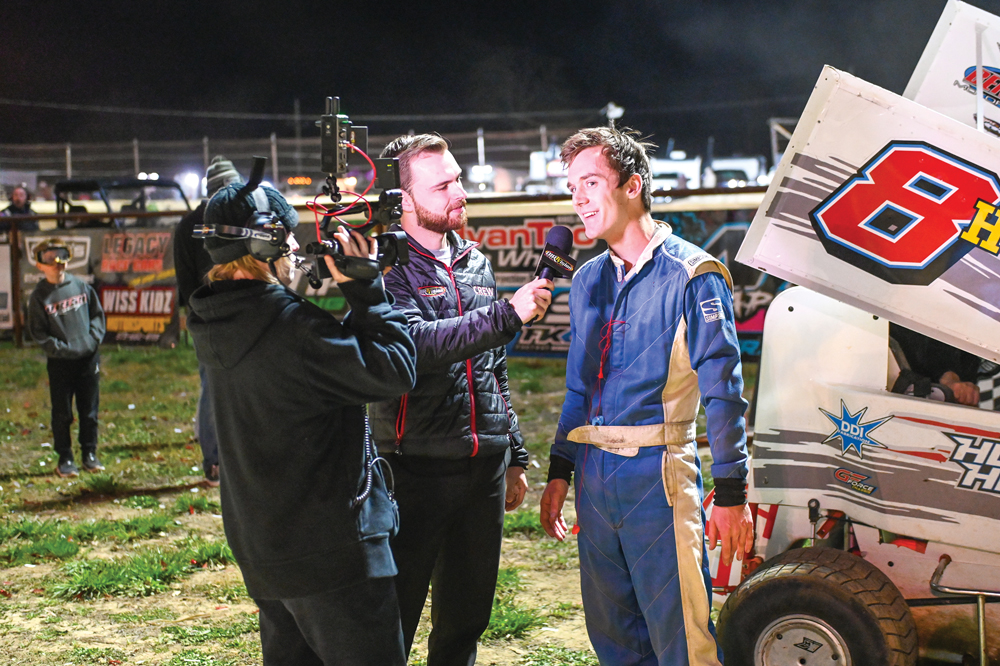
“But as things evolve and streaming of things come, and you look at getting sponsorship dollars and new real revenue coming back to the sport, because we’re in a time where your reach is graded on your digital presence, you have to put some framework around that independent media element of it. This has not been easy to do at all because when there’s change, sometimes people don’t embrace it, and false information gets put out there.
“One of the biggest things we’ve done with our initiative and our streaming is that it’s a controlled environment,” Richardson continued. “You can’t just show up there and video it and put it up on YouTube anymore in terms of just being a guy on the sidelines. This is a huge change and hasn’t been easy to do, but at the same time you’ve got to get everybody to one place to build an audience and really use that audience to see what the fanbase of truck and tractor pulling is. Because right now, before we did this, nobody could really tell you how many people followed the sport outside of all the events and venues. They would be at capacity, but digitally we had no idea because you had an uncontrolled environment.”
Future Trends
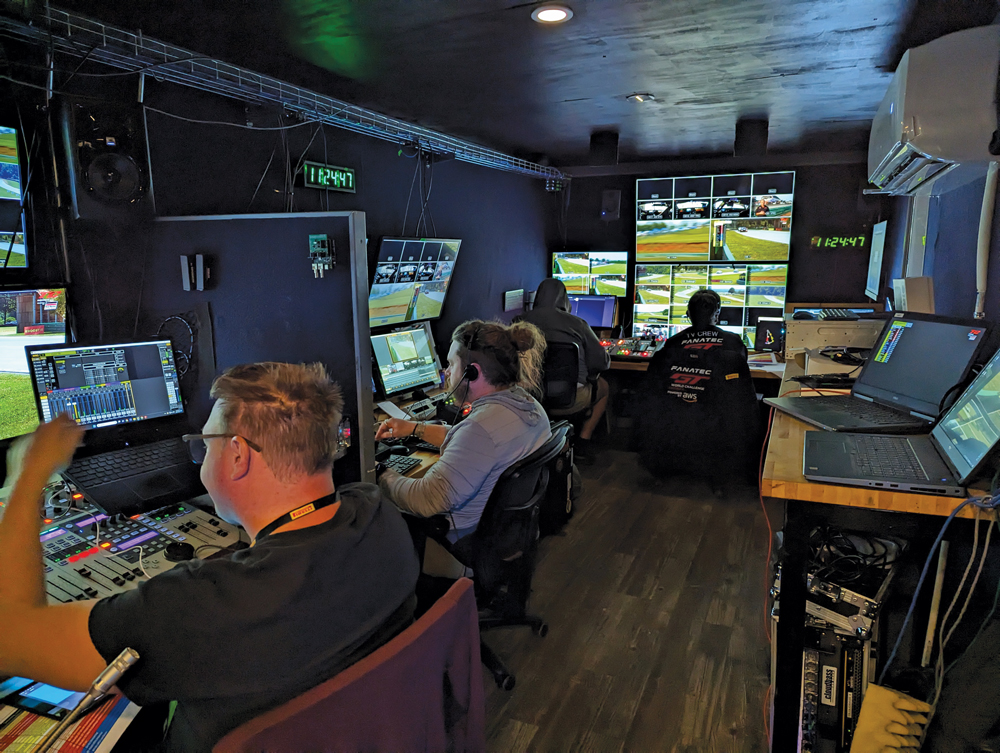
As streaming spreads, it will reshape the way we watch motorsports. In fact, it already is for some new fans. Cambern has seen this evolution with Apex Broadcast’s SRO streams. “We live stream on YouTube, but then we also do a simulcast on Twitch,” he said. “A wonderful person named Ash Vandelay runs that Twitch stream and comments on top of the live show that’s already happening. She parses it for her fans. It’s this really interesting genre that’s super effective. She’s reaching a specific audience that’s Twitch oriented, that maybe is a bit newer to motorsports, or they’ve come in from the eSports side and now they want to watch the real thing.
“I think everyone is starting to realize we don’t necessarily need to be exclusive in our delivery style or format,” Cambern continued. “Nor do we need to be super exclusive in the way we story tell—different fan bases, different people consume and understand stories in different ways, and we in the industry need to be more flexible in how we present stuff and be open to presenting things in a new way.”
“In the world we live in now, society has changed, particularly since 2020. Things are measured on your digital presence, and nothing’s more digital than a stream,” Richardson said. “People learn and hear about things through digital information these days, via social media, proper marketing. And what we’re doing with gaming, we’re hoping that can be a driver to bring new eyeballs to our sport specifically. But I think it can continue growth for everyone. If there was no streaming, none of these digital initiatives, I think motorsports would be in huge trouble as a whole.”
SOURCES
Apex Broadcast
facebook.com/apexbroadcast/
FloRacing
floracing.com
Full Pull Entertainment
fullpull.us
Speed Sport 1
speedsport1.com
 MEMBERSHIP LOGIN
MEMBERSHIP LOGIN JOIN PRI
JOIN PRI


